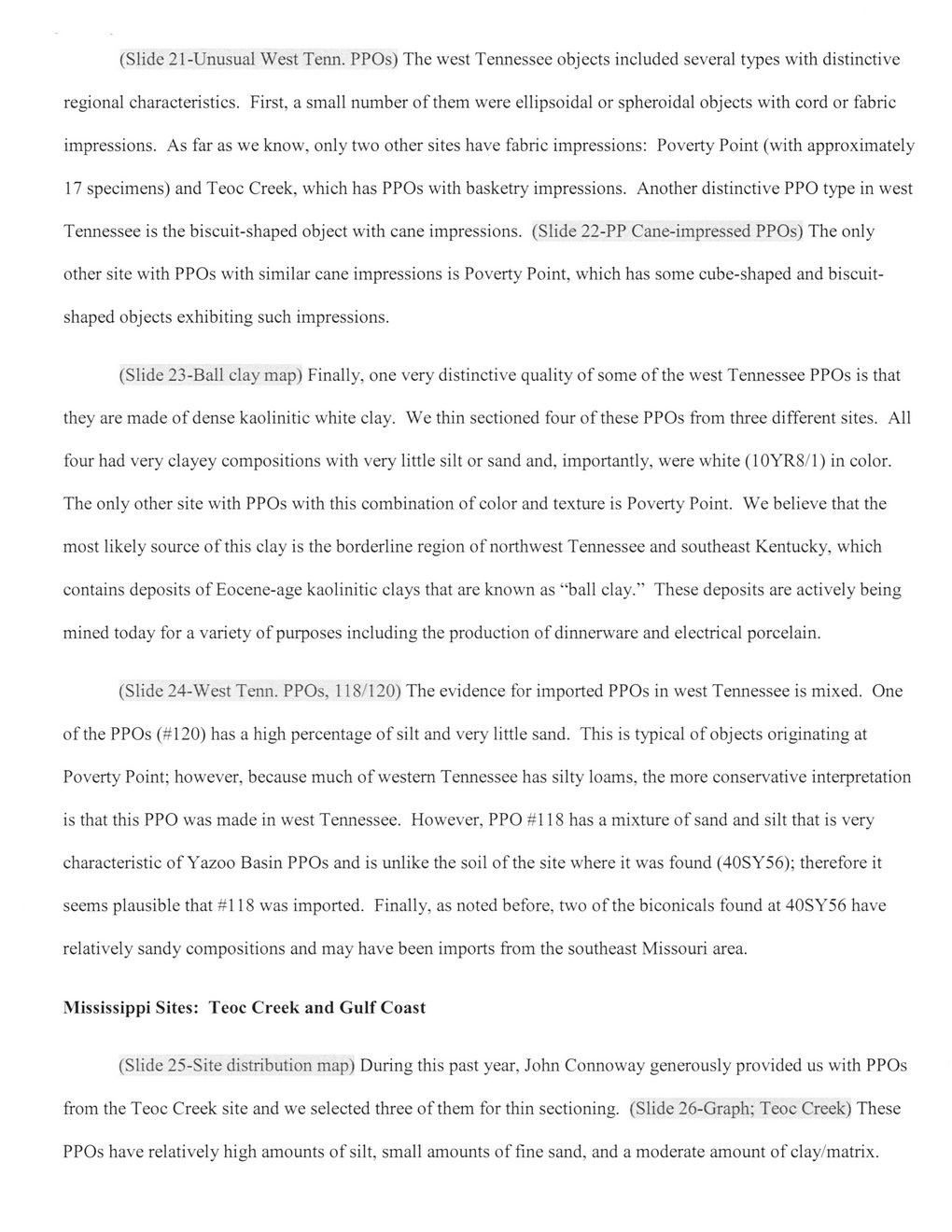This text was obtained via automated optical character recognition.
It has not been edited and may therefore contain several errors.
(Slide 21-Unusual West Tenn. PPOs) The west Tennessee objects included several types with distinctive regional characteristics. First, a small number of them were ellipsoidal or spheroidal objects with cord or fabric impressions. As far as we know, only two other sites have fabric impressions: Poverty Point (with approximately 17 specimens) and Teoc Creek, which has PPOs with basketry impressions. Another distinctive PPO type in west Tennessee is the biscuit-shaped object with cane impressions. (Slide 22-PP Cane-impressed PPOs) The only other site with PPOs with similar cane impressions is Poverty Point, which has some cube-shaped and biscuitshaped objects exhibiting such impressions. (Slide 23-Ball clay map) Finally, one very distinctive quality of some of the west Tennessee PPOs is that they are made of dense kaolinitic white clay. We thin sectioned four of these PPOs from three different sites. All four had very clayey compositions with very little silt or sand and, importantly, were white (10YR8/1) in color. The only other site with PPOs with this combination of color and texture is Poverty Point. We believe that the most likely source of this clay is the borderline region of northwest Tennessee and southeast Kentucky, which contains deposits of Eocene-age kaolinitic clays that are known as “ball clay.” These deposits are actively being mined today for a variety of purposes including the production of dinnerware and electrical porcelain. (Slide 24-West Tenn. PPOs, 118/120) The evidence for imported PPOs in west Tennessee is mixed. One of the PPOs (#120) has a high percentage of silt and very little sand. This is typical of objects originating at Poverty Point; however, because much of western Tennessee has silty loams, the more conservative interpretation is that this PPO was made in west Tennessee. Flowever, PPO #118 has a mixture of sand and silt that is very characteristic of Yazoo Basin PPOs and is unlike the soil of the site where it was found (40SY56); therefore it seems plausible that #118 was imported. Finally, as noted before, two of the biconicals found at 40SY56 have relatively sandy compositions and may have been imports from the southeast Missouri area. Mississippi Sites: Teoc Creek and Gulf Coast (Slide 25-Site distribution map) During this past year, John Connoway generously provided us with PPOs from the Teoc Creek site and we selected three of them for thin sectioning. (Slide 26-Graph; Teoc Creek) These PPOs have relatively high amounts of silt, small amounts of fine sand, and a moderate amount of clay/matrix.

Claiborne Historical Site Guerin-Giardino-(041)